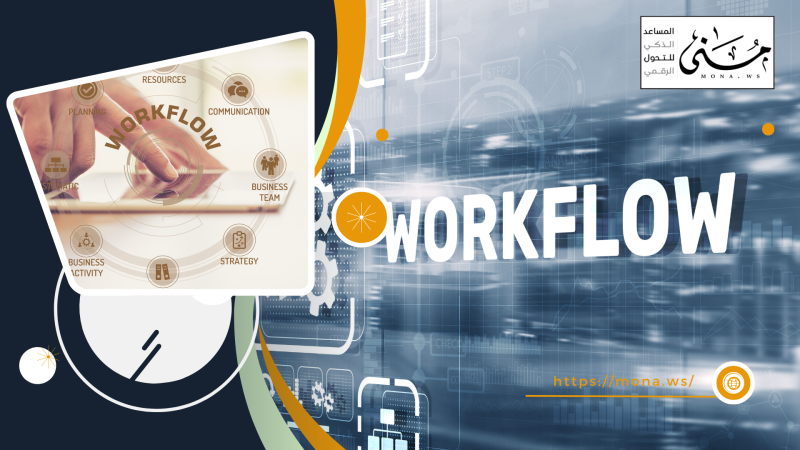At Mona News, we follow the digital developments reshaping the landscape of business and services worldwide. With the rapid and massive growth in the volume of data generated by organizations every day—from electronic transactions to customer interactions—big data analytics has become a central pillar of decision-making and strategic planning.
Today, data is no longer just stored information; it has evolved into a strategic asset that enables organizations to forecast trends, understand behaviors, optimize operations, and deliver services that align more accurately with public needs.
📊 What Is Big Data?
Big Data refers to vast and continuously growing sets of complex information that flow into organizations at unprecedented rates. These datasets are characterized by the globally recognized 3Vs:
• Volume
Big data consists of enormous quantities—millions or even billions of records originating from multiple sources such as transaction systems, social media, government databases, surveillance cameras, smart sensors, and mobile applications.
As volumes grow, the need increases for systems capable of cloud storage, instant processing, and deep analytics without compromising performance.
• Velocity
Data today is generated in near real-time—whether from IoT devices, payment gateways, customer service platforms, or electronic correspondence.
This speed requires tools that can process information the moment it arrives, enabling organizations to make immediate decisions based on current realities rather than delayed reports.
• Variety
Modern data is no longer limited to structured tables. It now includes:
text, images, videos, audio files, geolocation data, e-transactions, digital forms, call logs, and customer feedback.
This diversity demands advanced analytical tools that can break down multi-format content and unify it into a single, coherent knowledge framework.
🧠 Why Is Big Data Analytics Important?
Analyzing these massive, fast-flowing, and diverse datasets empowers organizations to:
-
Discover hidden patterns that were previously impossible to detect
-
Correlate events and processes to reveal causal and linked relationships
-
Predict the future by reading recurring behaviors and market trends
-
Make accurate, data-driven decisions instead of relying on guesswork
In this sense, data becomes a strategic compass guiding organizations toward improved performance, enhanced services, and better user experiences.
⚙️ The Role of Intelligent Systems in Managing and Analyzing Data
Traditional methods can no longer manage today’s complex data landscape. The volume and complexity of information require advanced digital systems capable of handling data intelligently and efficiently. Such systems must be able to:
• Collect Data from Multiple Sources
Data comes from HR systems, customer service platforms, administrative correspondence, websites, social networks, and IoT devices.
Smart systems unify this data in one environment, providing a full, connected picture without switching between scattered tools.
• Clean, Process, and Connect Data
Before analysis begins, data must be purified from errors, duplicates, and inconsistencies. Then it's processed and mapped to produce a unified, structured dataset ready for analysis—ensuring results are accurate and reliable.
• Analyze Data and Visualize Insights Through Dashboards
Once prepared, data is transformed into understandable insights using charts, KPIs, and interactive dashboards.
These tools allow leaders to track performance, identify weaknesses, monitor efficiency, and measure service quality in real-time—all in a single visual interface.
• Link Analytics to Workflows and Decision-Making
Analysis becomes truly valuable when it integrates directly into operational processes.
Modern systems tie analytical indicators to daily workflows such as approvals, task assignments, request processing, risk management, and correspondence tracking.
This enables instant decisions based on live data, improving responsiveness and accuracy.
🗂️ DocSuite: Real-Time Insight from the Heart of Organizational Data
Among today’s intelligent platforms, DocSuite stands out for its exceptional ability to integrate analytics directly into organizational workflows. While many systems simply collect or display data, DocSuite goes further—embedding analytics into daily operations, so decisions become part of execution, not a separate step.
🔍 DocSuite… When the System Becomes the Organization’s Analytical Brain
DocSuite provides unparalleled value through powerful analytical capabilities that process both operational and administrative data from within the platform:
-
Aggregating data from all forms, requests, and correspondences
-
Creating interactive dashboards to monitor performance and engagement
-
Analyzing workload, turnaround time, and team performance
-
Identifying bottlenecks inside any administrative procedure
-
Supporting decision-making through accurate, real-time insights
⚙️ DocSuite’s Integration with Operational Workflows: Management from Information to Execution
DocSuite isn't limited to analytics; it extends across a full operational ecosystem, including:
• Work Orders Management
Track work orders from creation to closure, monitor duration, executed tasks, and responsible teams. Analytics reveal recurring issues, high-demand locations, and team efficiency.
• Spare Parts Inventory Management
Connect usage levels with stock availability to prevent shortages and reduce downtime, while analyzing consumption patterns.
• Asset Management
Document the entire asset lifecycle—from acquisition to maintenance and replacement—supported by metrics on breakdown frequency, cost, and equipment performance.
• Preventive Maintenance
Leverage data-driven schedules rather than assumptions, increasing asset lifespan and reducing emergency failures.
• Safety & Compliance
Record incidents, track safety actions, verify compliance with regulations, and analyze internal risks.
• Reports & Business Intelligence
Generate real-time detailed reports covering performance, failures, productivity, and resource consumption.
• Service Management
Monitor service quality, response times, and customer satisfaction—whether services are internal or external.
🎯 Conclusion: DocSuite Is Not Just a System… It Is a Complete Operational & Analytical Platform
By combining analytical power with operational capabilities, DocSuite becomes a comprehensive platform that enables organizations to:
-
Monitor work in real time
-
Make data-driven decisions
-
Improve process efficiency
-
Enhance user experience
-
Reduce time and costs
-
Build a smart, cohesive workflow ecosystem
As institutions increasingly rely on data and intelligent systems, DocSuite stands as a central hub for analytics, operations, and governance.
🌐 How Big Data Is Transforming the Future of Organizations
With the accelerating pace of digital transformation, big data has emerged as one of the most strategic assets shaping organizational decisions. Organizations leveraging data analytics become:
-
Better at predicting customer behavior
-
Faster in processing transactions
-
More accurate in measuring performance
-
Stronger in strategic planning
With platforms like DocSuite, analytics becomes embedded in every process. Each task, request, message, or workflow step is instantly transformed into meaningful insights—turning the system into a predictive engine that drives efficiency and innovation.
Big data is no longer a technical term—it is the language of the future, shaping the institutions that thrive. With growing data complexity, the need for intelligent solutions like DocSuite becomes essential for turning information into strategic decisions—and those decisions into measurable, sustainable outcomes.
🔚 Final Thoughts
In a digital world where data grows exponentially, success is no longer determined by experience alone, but by the ability to read data and convert it into smart decisions. Big data has become a catalyst for innovation, reshaping processes, elevating service quality, and driving performance.
With advanced analytical solutions like DocSuite, organizations no longer need scattered tools or complex reports. They can now view the complete picture through a unified platform that integrates operations, analysis, and prediction—paving the way for a more efficient, flexible, and insight-driven future.
As technology continues to unlock new horizons, investing in big data and intelligent systems remains the most reliable path for any institution aiming to excel in the age of speed and information.










Comments
Add New Comment